How to raise funds for your app idea

Helen Keller once famously said, "Ideas without action are useless." The same could be said for app ideas — only you can replace "action" with "funding."
It's a harsh truth. You may have the next great app brewing in your mind already, but without the money to execute your plans, you won't get very far.
GoodFirms estimates a basic app will cost between $40,000 to $60,000. For an app with medium complexity, expect to pay between $61,000 to $69,000. And if you're looking at something that's feature-rich — meaning there are several different functions and attributes involved — that could cost you between $70,000 to $100,000.
That's where investors come into the picture. Utah just happens to be a hotbed for app development and investment. WalletHub named Utah the best state in the nation for starting a business, and also ranked No.1 in the same report for access to resources.
But investors are looking for more than just a novel idea. If you want to catch their attention, you have to demonstrate that you've got a strong team behind you with a well-defined marketing plan. The app market is a competitive one, so it's crucial to follow some best practices before approaching investors.
Here's how you can solidify your app's potential.
Wireframe the app
Potential investors need to be able to envision what the final product will look like and a wireframe is like the blueprint of your app idea. You'll want to create a visual mockup that showcases how the app will function, look and feel. The more thorough you can be with your wireframe, the better.
Codecademy explains, "The wireframe outlines the purpose of the app's pages (or screens), answering questions like: 'What is the user trying to get done when they see this page?' It also summarizes the relationships between different parts of the app and the results of interacting with the app's elements, answering questions like: 'What happens when the user clicks this button?'"
Writing for LinkedIn, Aria Norton explains that wireframing comes with a host of benefits. This includes improving communication between stakeholders and developers, helping you identify potential issues, improving user experience and ultimately saving you time and money.
"By addressing issues early on, designers and developers can avoid costly redesigns and rework," Norton says.
Create technical documentation
After wireframing, the next step is to outline your app's technical architecture, which includes your chosen technologies and development roadmap.
As Alana Chinn from HubSpot explains, "Technical documentation is a lot like a recipe for your favorite meal … Without it, sure, you could probably still get to the finish line in time for dinner. But it would be a lot more difficult without the guidance of an ingredients list and detailed cooking instructions."
A few examples of technical documentation include end-user guides, product roadmaps and test schedules.
Research the competition
You'll want to analyze apps that serve a similar purpose to the one you're creating. Identify their strengths and weaknesses and then show how your app is going to help fill a gap in the market.
Develop a low-cost prototype
Developing a basic, functional prototype allows potential investors to experience your app's core functionalities. This can be a powerful tool to showcase the app's viability and user experience, which are two things your investors will be evaluating.
Define a sustainable monetization plan
Of course, money comes into play, too. Investors need to understand how your app will generate revenue. You'll have to decide if this will come through in-app purchases, a subscription service or through ads.
Freemium models — where basic features are free and premium features require purchase — can be a great way to get new users. Even if these users never purchase anything, it can still benefit your app.
"[T]hough these users may not be explicitly purchasing upgrades or items, the company can collect their user information and data, show them ads to make revenue, and boost their own business numbers to continue to enhance the application," Troy Segal writes for Investopedia.
Whichever monetization plan you choose, clearly outlining your strategy demonstrates a path to profitability and a strong return on investment for potential funders.
Do beta testing with your target audience
Last but not least, before pitching to large investors, conduct a beta test with a targeted group of users from your ideal audience. This allows you to gather valuable feedback on the app's usability, functionality and value proposition. By addressing these insights and refining the app based on user experience, you can ensure a stronger product-market fit and a more successful launch.
By focusing on these elements, you'll present a compelling case that goes beyond the initial app idea and your investors will be eager to jump on board.
AppsTango can help
AppsTango, a premier app development company located in Lehi, is not only a leading force in app creation but also an early-stage investor in promising apps. If you have a great idea, a solid team and a well-defined marketing plan, AppsTango can be your partner in turning your vision into a successful app.
View the article on KSL here.




